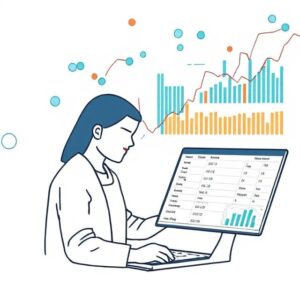Protecting Your Data Security Measures for Direct Data Entry Projects
Protecting Your Data Security Measures for Direct Data Entry Projects is essential, especially when you’re dealing with sensitive or personal information. Implementing strong security measures helps safeguard both the data and the integrity of your project. Here are some key steps you can take:
1. Secure Data Access and Authentication
- User Authentication: Use strong, multi-factor authentication (MFA) for those accessing the data entry platform. This ensures only authorized personnel can access sensitive data.
- Role-Based Access Control: Limit access to data based on roles. For example, an entry clerk may not need access to all the project’s data, only the parts relevant to their tasks.
2. Encryption
- Data in Transit: Ensure that all data transferred between users and servers is encrypted using protocols like SSL/TLS to prevent interception.
- Data at Rest: Store sensitive data in an encrypted format, making it harder for unauthorized individuals to access it, even if they gain access to the storage system.
3. Data Backup and Recovery
- Regular Backups: Perform regular backups of the entered data, and store these backups in secure, remote locations. This protects against data loss due to accidental deletion, corruption, or cyberattacks.
- Disaster Recovery Plan: Develop and regularly test a disaster recovery plan to ensure data can be restored in case of a security breach or hardware failure.
4. User Training and Awareness
- Security Awareness Training: Regularly train team members on best security practices, including recognizing phishing attempts, handling sensitive information, and using strong passwords.
- Data Entry Protocols: Establish clear guidelines for data entry, including how to handle personal and confidential information, and avoid using unsecured devices or networks for data entry.
5. Auditing and Monitoring
- Audit Trails: Implement logging to track who accessed, entered, or modified data. This makes it easier to identify potential breaches and address them quickly.
- Real-time Monitoring: Set up monitoring systems to detect any suspicious activity in real-time, such as unauthorized access or data exfiltration attempts.
6. Physical Security
- Access Control to Workstations: Ensure physical security at data entry locations by restricting access to authorized personnel only.
- Device Security: Make sure devices used for data entry are secured with strong passwords, screen locks, and encryption.
7. Data Minimization
- Collect Only Necessary Data: Avoid collecting more information than is needed for the project. This reduces the risks associated with handling sensitive data.
- Data Anonymization/Redaction: Where possible, anonymize or redact personal information to reduce the risk of exposure.
8. Secure Cloud Services and Platforms
- Choose Reputable Providers: If using cloud-based platforms for data entry, choose providers with strong security protocols, including end-to-end encryption, regular audits, and compliance with relevant standards (e.g., GDPR, HIPAA).
- Access Logs and User Monitoring: Ensure that the cloud service you use provides tools for monitoring user activity and generating access logs.
9. Compliance with Regulations
- Data Protection Regulations: Stay informed about data protection regulations (e.g., GDPR, CCPA) relevant to the data you’re collecting and ensure compliance with them.
- Contractual Security Requirements: Ensure that any third-party service providers or contractors handling your data adhere to similar security standards.
10. Use Secure Data Entry Interfaces
- Data Entry Software: Use specialized, secure data entry software that includes built-in security features like encryption and role-based access.
- Avoid Manual Entry Risks: If manual data entry is unavoidable, ensure that physical access to data is restricted and that it is stored securely.
By implementing these measures, you can greatly reduce the risk of data breaches and ensure that your direct data entry projects remain secure. Always stay updated on emerging security trends to adapt your methods accordingly.

We are also on Facebook
Go back to home page: www.mistyinfotech.com
If you want to Direct Data Entry Projects with Company with Us Please go here: Direct Data Entry Projects with Company







